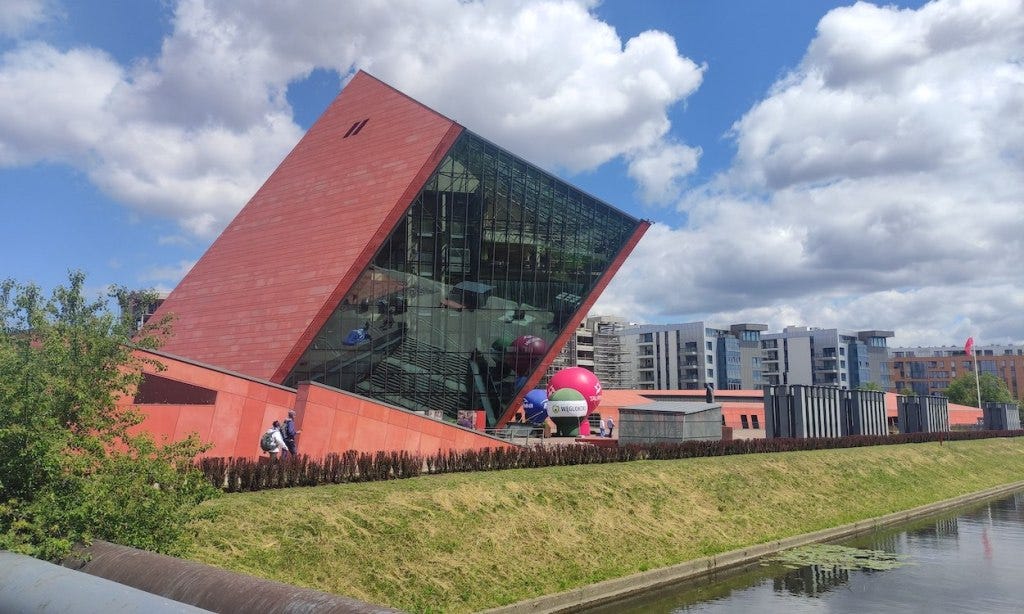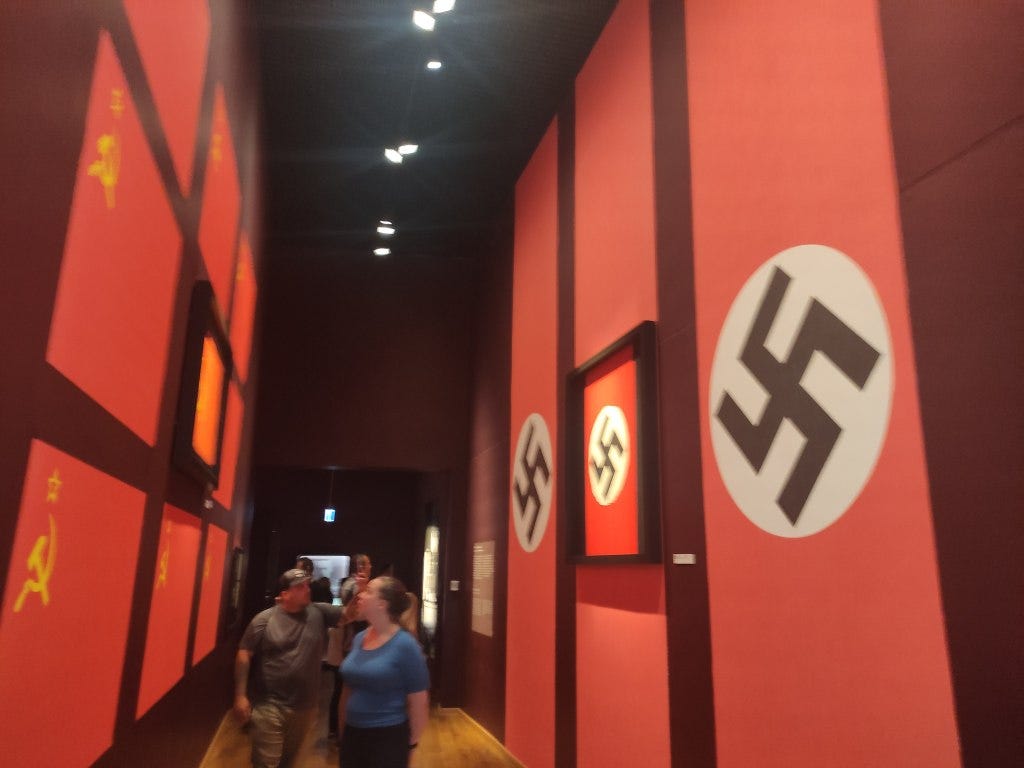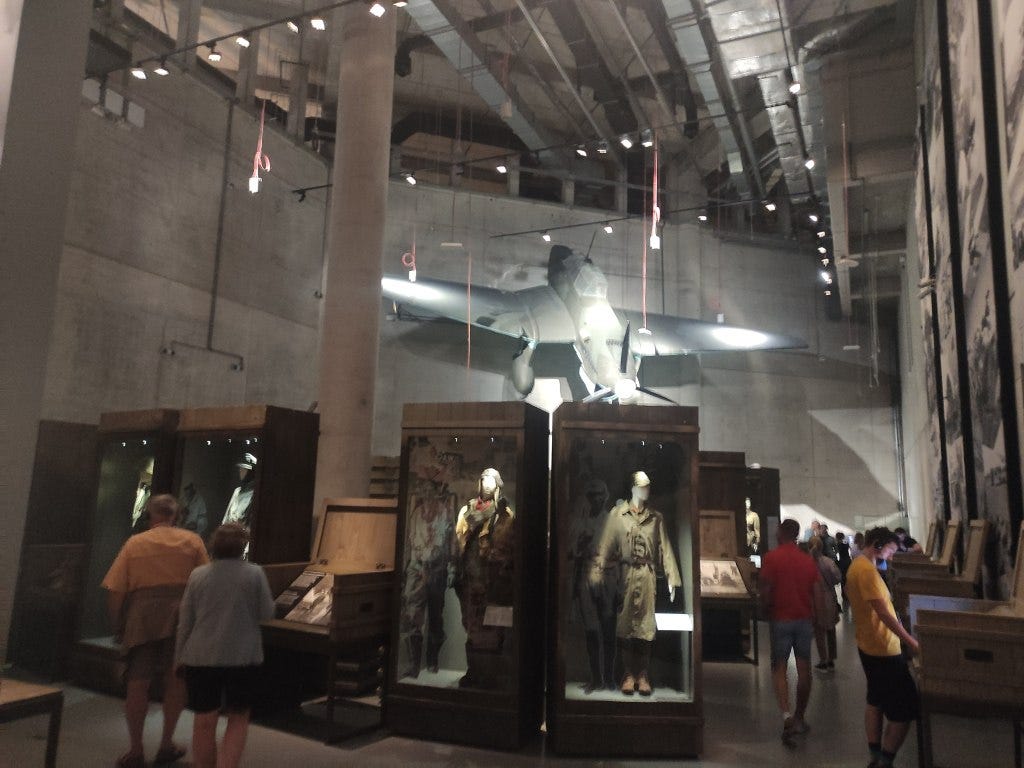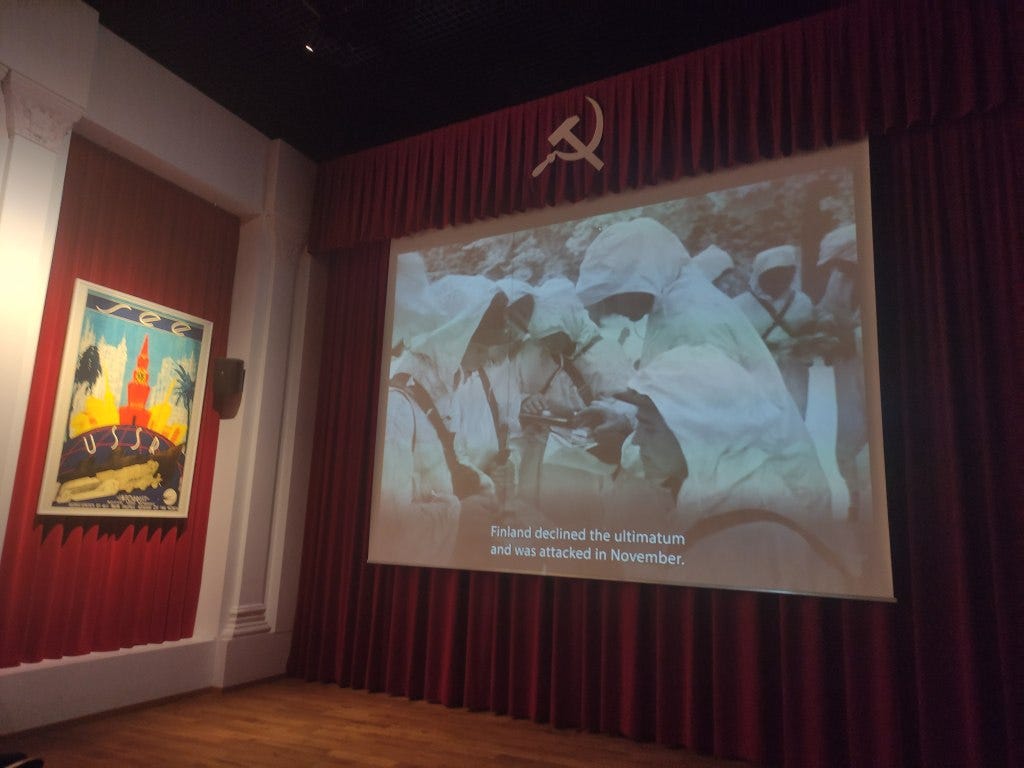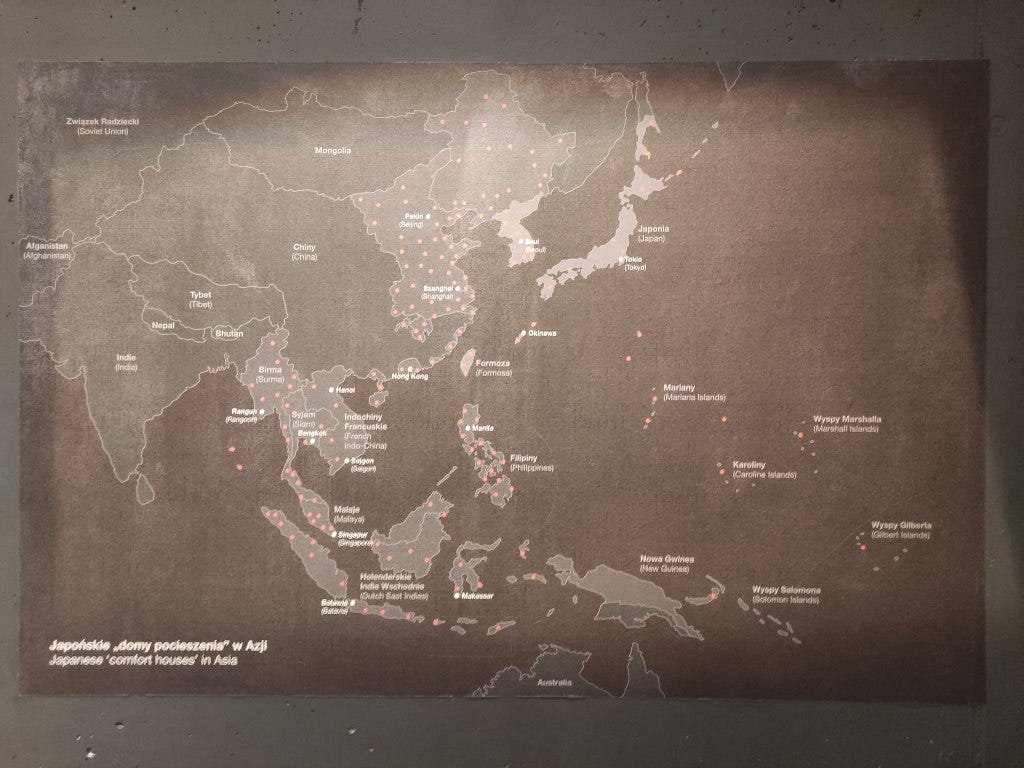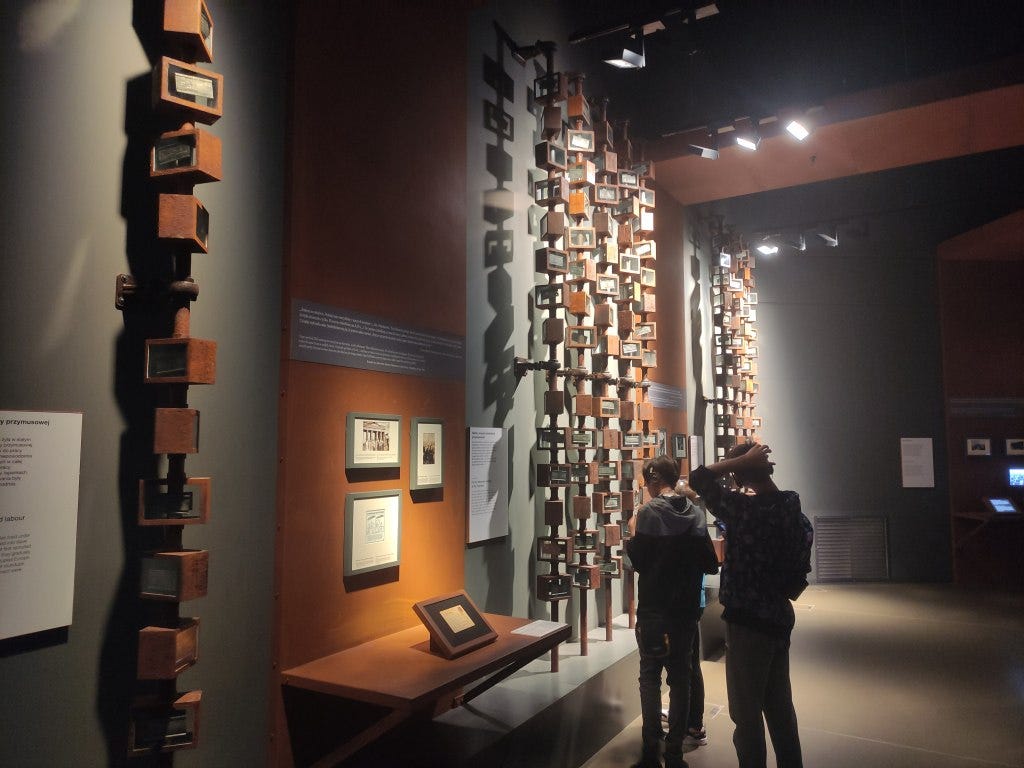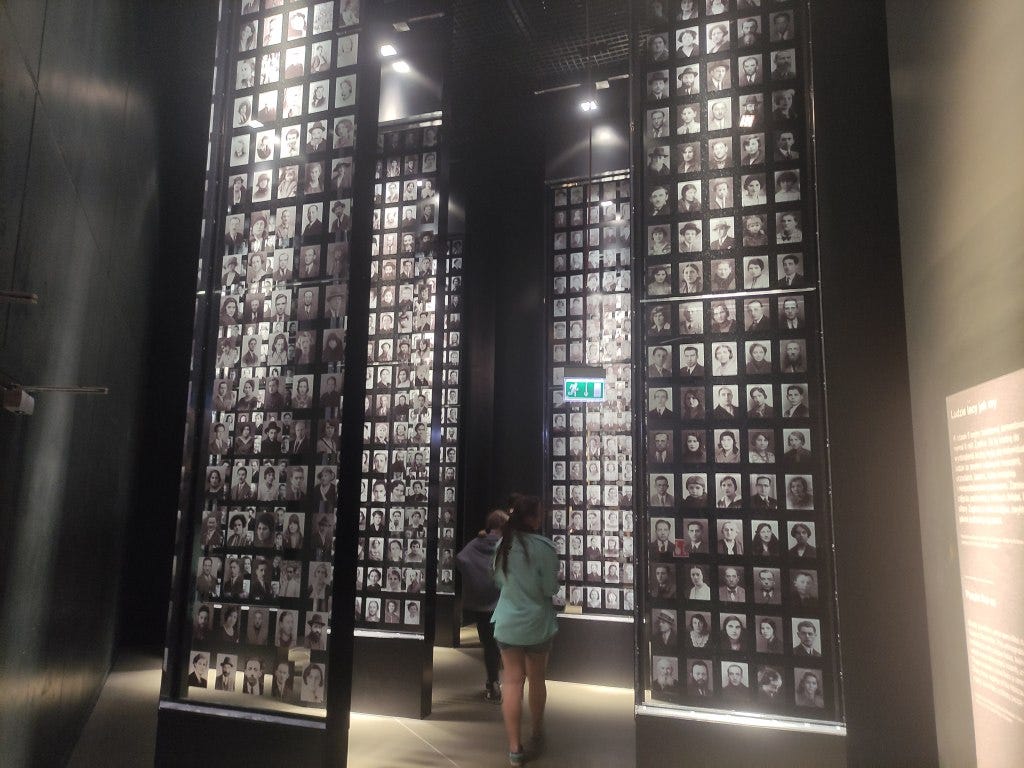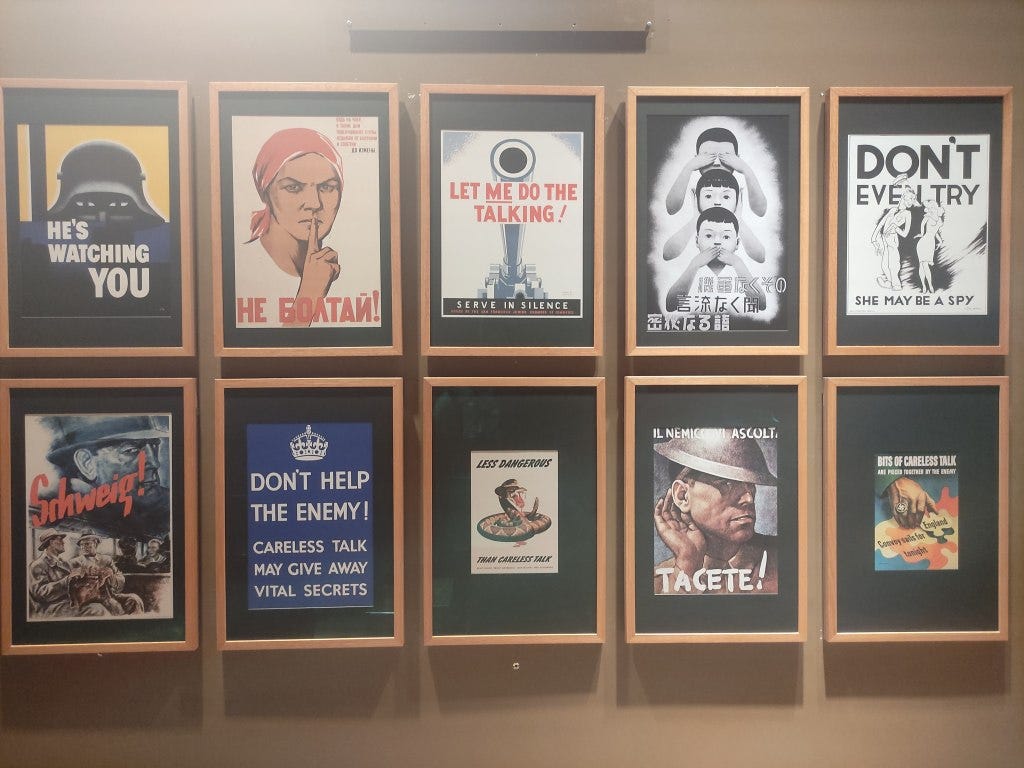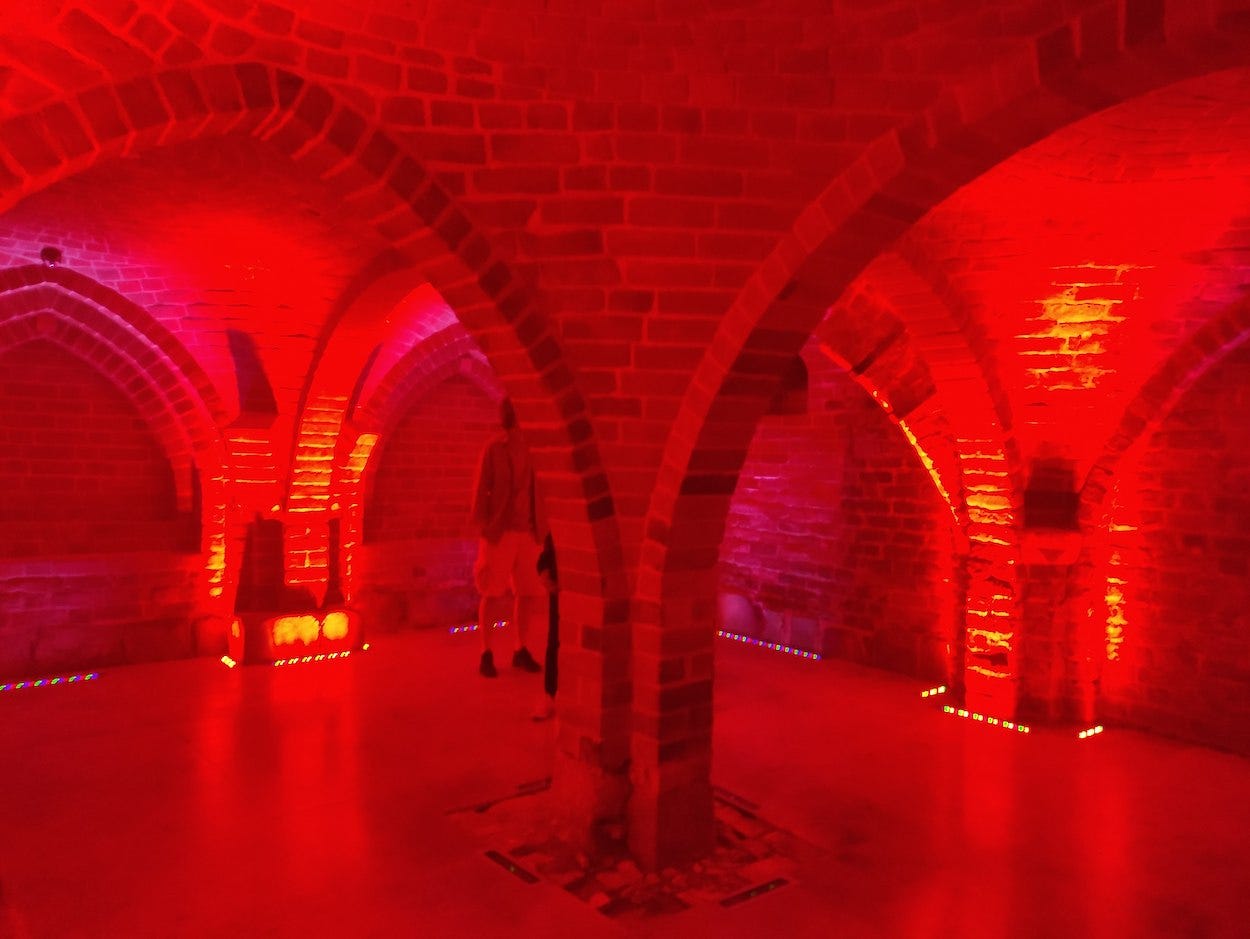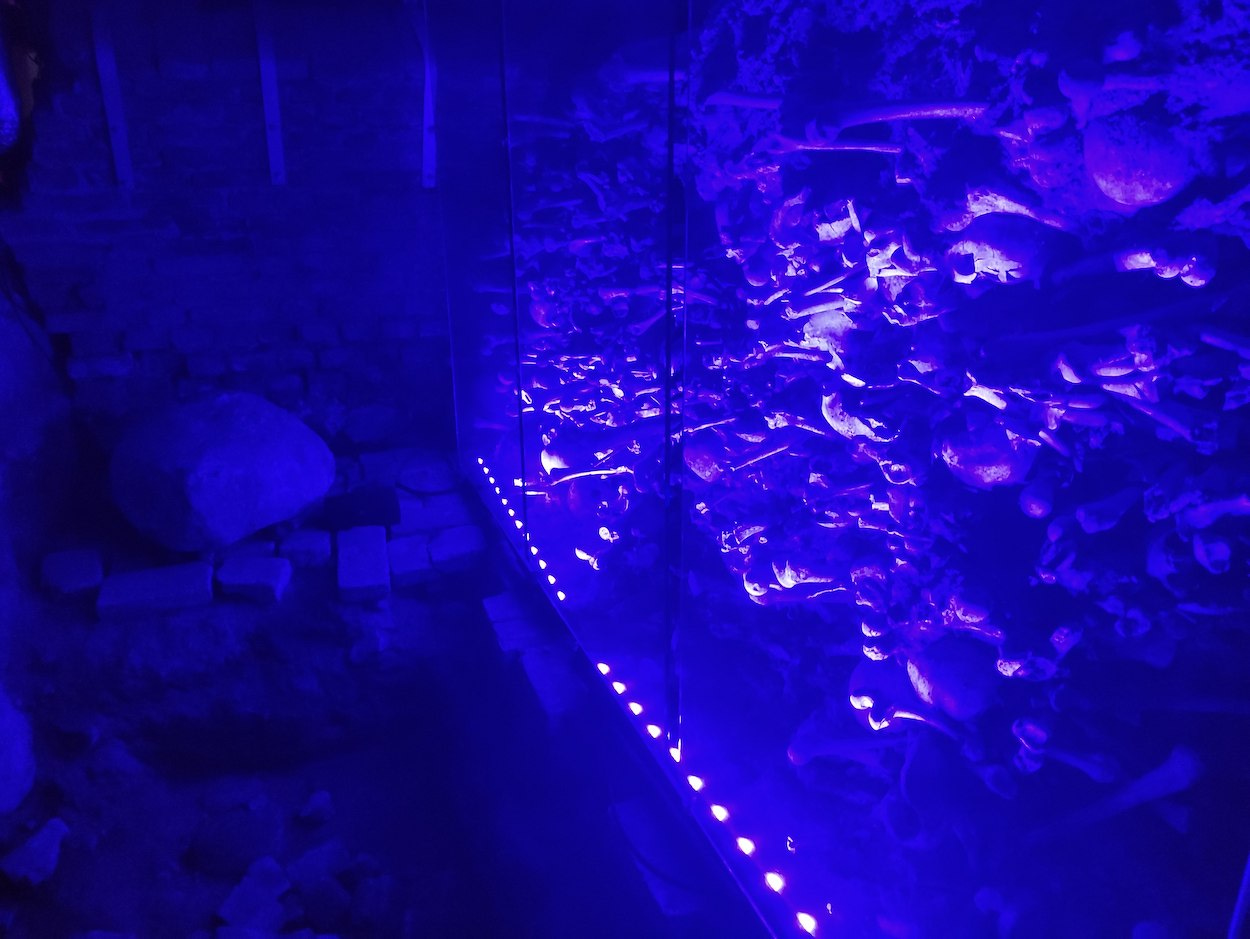Museum of World War 2, Gdańsk (Muzeum II Wojny Światowej w Gdańsku)
As the stench of corruption in the UK spreads far and wide enough that I can smell it from here, where without the first edition of "the paper of record" (ha) you might have no idea of a powerful man's second attempt, (that we know of) to give work to his mistress and where the long-running crisis in the legal system (long pre-dating covid, to go with those prompted in health, transport and so on by under-funding or assuming the private sector will do more than look after itself) finally looks to be coming to a head, it seemed a good idea to take a reflective look at where a democratic vote for a legendary fuckwit and media management can take humanity.
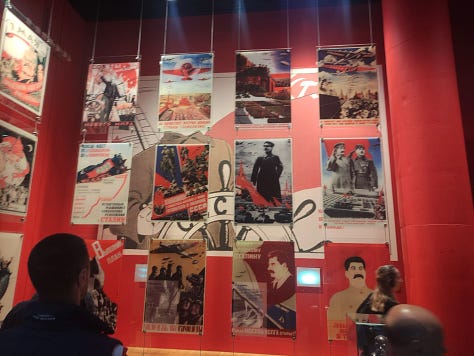
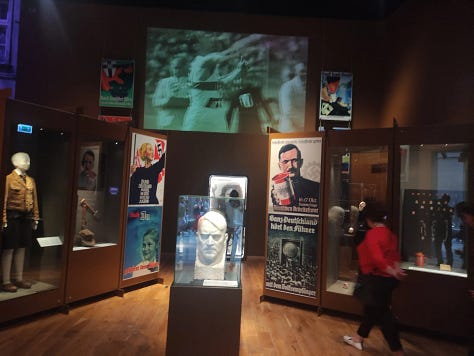
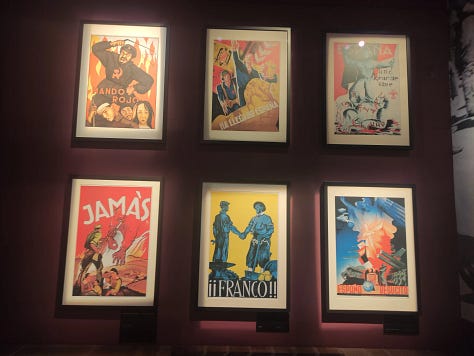
I ended up at the Museum of the Second World War, North of the old city. Fortunately this is an excellent museum, informative, reflective and thanks perhaps to Gdańsk's unique perspective on events, sombre even as you get to the 'triumph' at the end.
Gdańsk's own history is complex, ruled over time by Germans, Poles, Prussians and itself. From 1918 to 1939 it was in a disputed corridor and with a huge majority of Germans in the city, it wasn't given back to Polish control. In the late 1930s, Poles and their language were excluded from public life and ultimately the status of the city, with its Nazi majority in parliament, was used as an excuse to invade Poland. After the war, though Poland was on the winning side, its rewards for such were ambiguous. Gdańsk itself was annexed by Poland but had a Soviet-installed Communist government.
The museum is split up into several zones. The entrance is down stairs from ground level, and then you head down to floor -3 for tickets and exhibits. You start in a long corridor with exhibitions off to each side, though the first two are small rooms, giving an idea that you will be popping in and out. Then you head into another small room, through and everything opens out, and it is clear that this is not a museum presenting things in small bites. It is very atmospheric, and you could almost wander through and just gaze around you for an experience all of its own.
That said, there's also a whole stack of information. In the picture above, which was the first large hall I came to (entirely possible I missed one, so I won't say it is the first), there are captions in Polish and English for everything. To the right are several interactive displays, again in Polish and English, allowing you to read more about the history of the war, or browse the pages of a journal displayed to one side and so on.

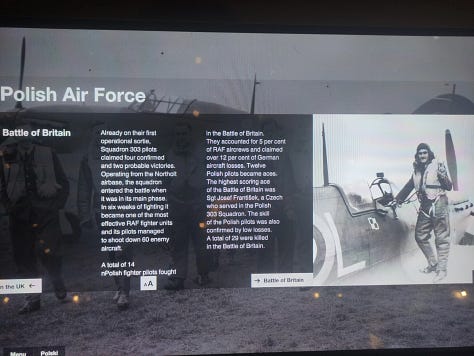
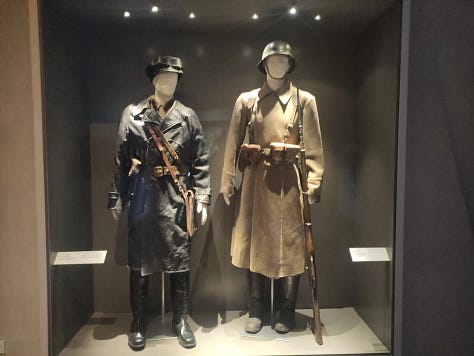
Some exhibits are large, some just small excerpts of life - like the barbed wire, above - that hang on huge walls, often to chilling effect. I got to the end of that long corridor - roughly where the 'Terror' sign offers entry to another gallery - and figured I was near the end. Word to the wise (but not wise enough to check a floorpan) - this is about halfway.
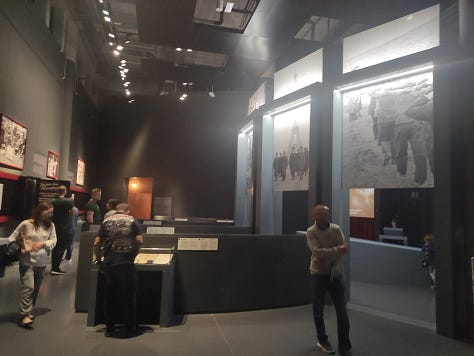
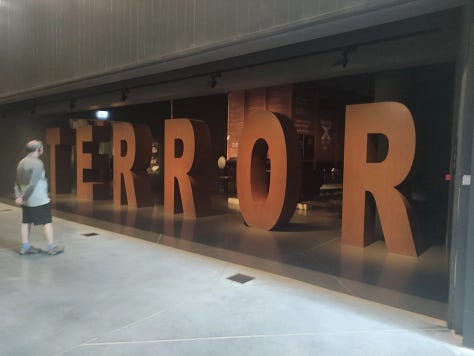
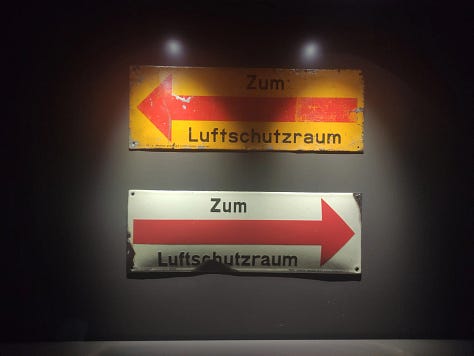
There are lots of exhibits, even a couple of reconstructed streets to allow you to feel a wartime atmosphere, and plenty of information about battles etc., but it is fair to say this museum is not nerding out on hardware or small detail of troop movements. Instead it is aiming more at a representation of how the war looked and felt to the people involved, particularly in Europe. So there is a tank and half a plane, but lots of uniforms, propaganda and information posters, personal effects from civilians, combatants and prisoners of war. As you might expect of a Polish museum, there's a section devoted to The Katyn Massacre, a terrible story both in that it happened and that people were further terrorised by being lied to and gaslit (strange to think this for Brits was once a distant idea) for years.
On the same theme, of the Polish view of the war, there's an enigma machine and a case with the story of Marian Rejewski, who was first to crack the code, and some stark casualty figures - check the green bar at the top, below, which shows (as a percentage) how many more Polish civilians were killed.
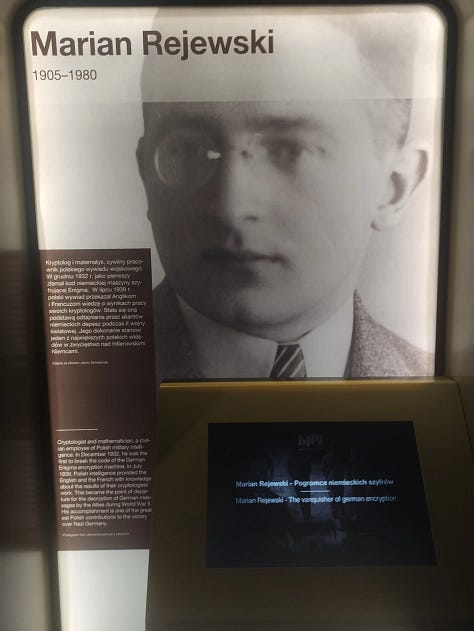
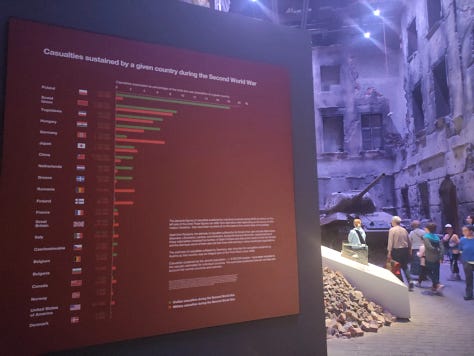
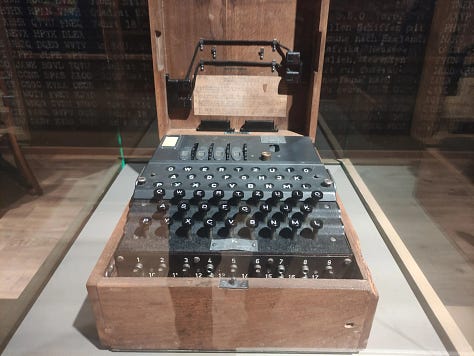
The museum is big, fascinating and clearly lovingly curated. It was busy when I went, but rarely crowded, and there are plenty of seats and free wifi if you want a break. It is open 10-6 Tuesday-Sunday, and you can book tickets online. Though not for Tuesday because, as I found out entirely by accident, on that day it is free. Otherwise the main price is 25zl (£4.62).
If you have a little time before or after, I also recommend the 20-minute experience that is the Piwnica Romańska, a Romanesque cellar offshoot of the Archaeological museum. It shows the remnants of a 13th century Dominican monastery, costs 8zl and although it's technically a museum, it's more of a show. I turned up and no one was behind the desk, while a couple of bemused tourists wondered if they should wait, or could just go in. The man of the couple put a foot on the stairs as if to test this out, and was warned off by a grumble from the old lady sat next to the desk who might have been knitting. Or just guarding. I hung around while they scuttled off, and was greeted fulsomely by the lady who returned, though she thought she had already spoken to me and I had already paid. By now I was ready to follow instructions, so I went downstairs and when she said there would be a film at 12, I figured I should stay in the first room, which has a few exhibits to one side, and a screen. 3 others, including the couple, joined me, and though we looked at the next room, which clearly had the results of the dig in, the ticket lady was corralling us into that room masterfully, just by twitching toward the door. We watched the short film, and were then invited into the first room, and she pressed whatever was necessary to start the narration. It was loud and clear, and then talked us from room to room, but we had further instructions from the ticket lady to keep us in the right place. There's an ossuary and a central room with funky columns and features, and you should go and take it in if you can. If not, these pictures give an idea - imagine being controlled over when you move, and a deep voice talking you through where to look and when to walk.




